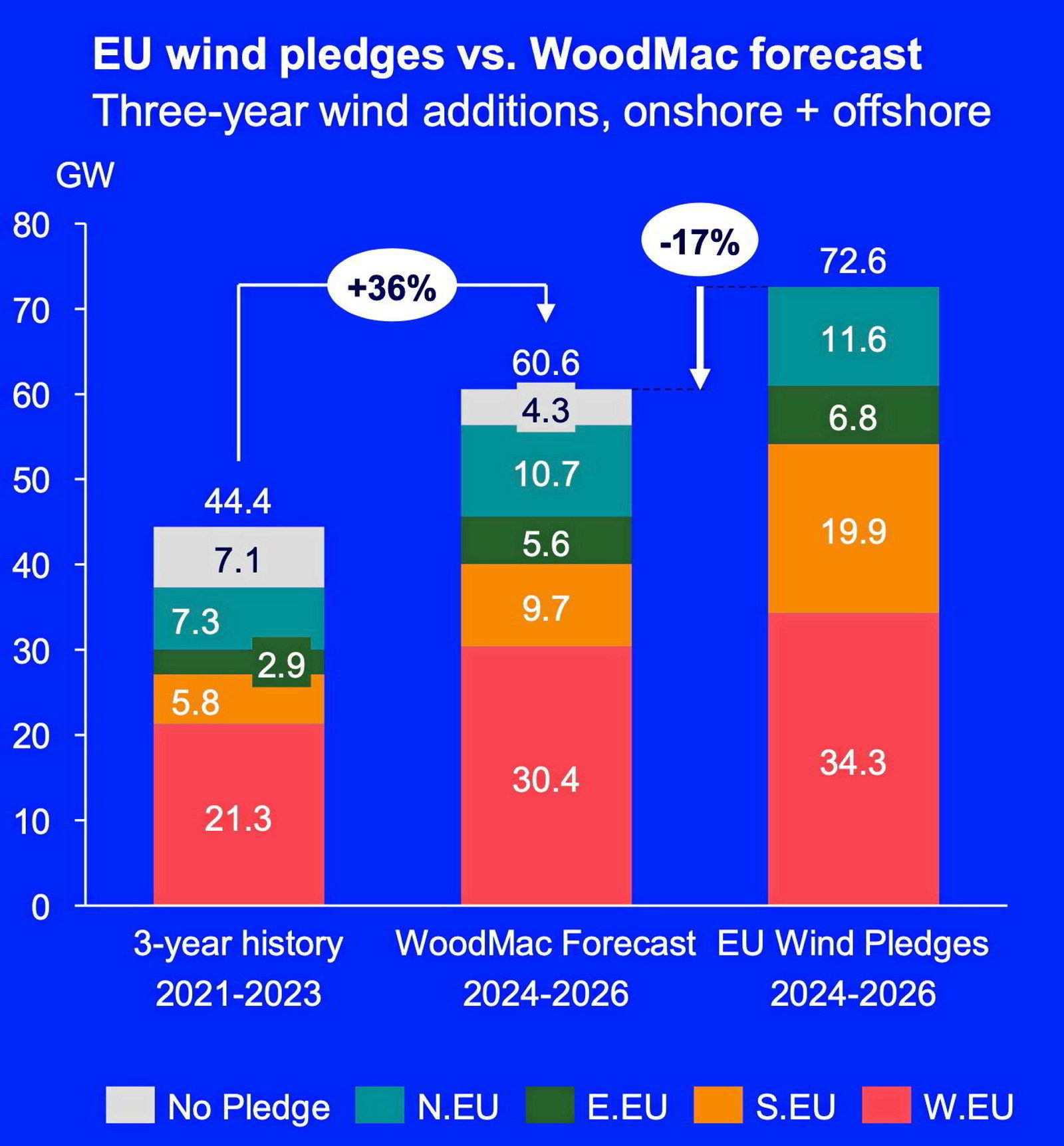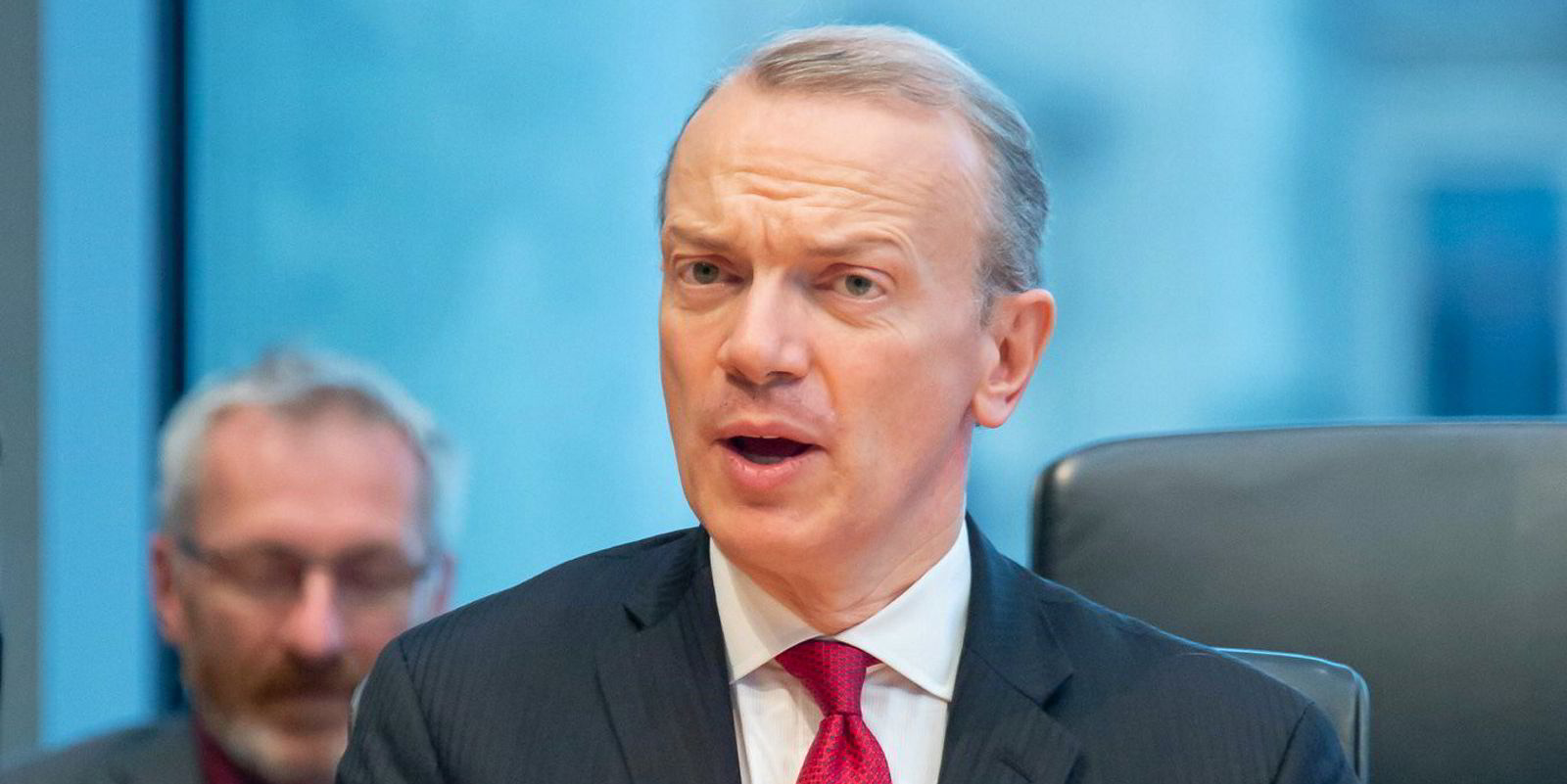Ambitious onshore wind power pledges set by many EU states may turn out to be little more than hot air, according to a Wood MacKenzie report, which said “urgent action” is needed to avoid most national targets and an EU goal being missed.
The European Commission launched its ‘wind power action plan’ in October to help propel the bloc to achieving its wider target of getting at least 42.5% of its energy from renewables by 2030.
The plan required near-term (2024 to 2026) voluntary non-binding wind energy pledges, which 21 of the 27 EU member states have submitted to date.
Many EU member states have “lofty ambitions” to significantly boost their onshore wind capacity by 2026, said a new report from energy consultancy WoodMac, which found these promises may however be “a little overblown.”
In total, announced pledges amount to 65.7GW, “comfortably exceeding” the 58.2GW WoodMac says these countries need to hit their EU-mandated national energy and climate plans. Western and southern Europe “lead the charge” with almost 50GW of the total.
“Near-term goal setting sends positive market signals,” said WoodMac, but it questioned whether some of these goals are realistic having analysed the pledges against its own forecasts for wind capacity growth in the bloc.
WoodMac forecasts 36% overall capacity growth in the EU wind sector from 2024 to 2026 compared to the previous three-year period from 2021 to 2023.
“While that sounds healthy, it’s well below the 60% growth represented by the pledges submitted under the bloc’s wind action plan,” it said. “As a result, the total of overall pledges would be missed by 17%.”

On a national level, “Spain’s ambition stands out,” it said, with a promise to double all-time annual onshore additions in the next two years.
Based on its own analysis of the existing project pipeline, permitting constraints and transmission limitations, WoodMac said it expects “only 43% of this pledge to be met.”
Meanwhile, though still significant, at 23.6GW, Germany’s pledge represents a 5GW downgrade from its original plan for the period, said WoodMac.
“Despite this, we expect bureaucratic bottlenecks will mean Germany falls significantly short of its goal, which is 67% higher than our forecast for capacity additions in the country.”
“Some smaller member states have made aggressive pledges,” it said. “For example, Estonia, Latvia and Romania have committed to 3.8 GW of additions by the end of 2026 – although this follows a three-year period when a mere 187 megawatts (MW) were installed.”
The Netherlands is likely to easily surpass its 400MW pledge for the period, said WoodMac, noting that land constraints have pushed the Dutch government to focus more on offshore development.
“Finland is also likely to significantly exceed its government’s (admittedly modest) pledges, thanks to a large pipeline of permitted projects and efficient grid connection procedures.”
Other countries that should “make the grade” are France, Greece and Ireland.
Follow all the news, opinion and analysis from our team of journalists at WindEurope 2024 in Bilbao via Recharge's dedicated Live Centre.



